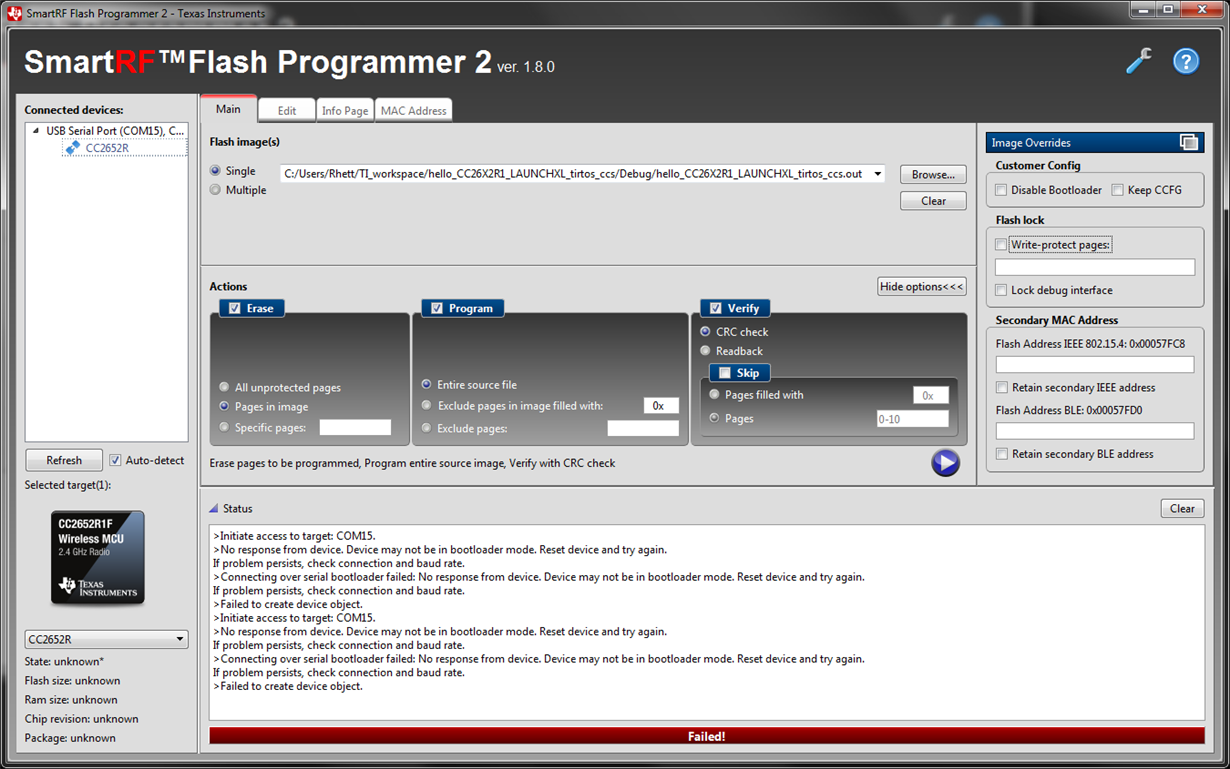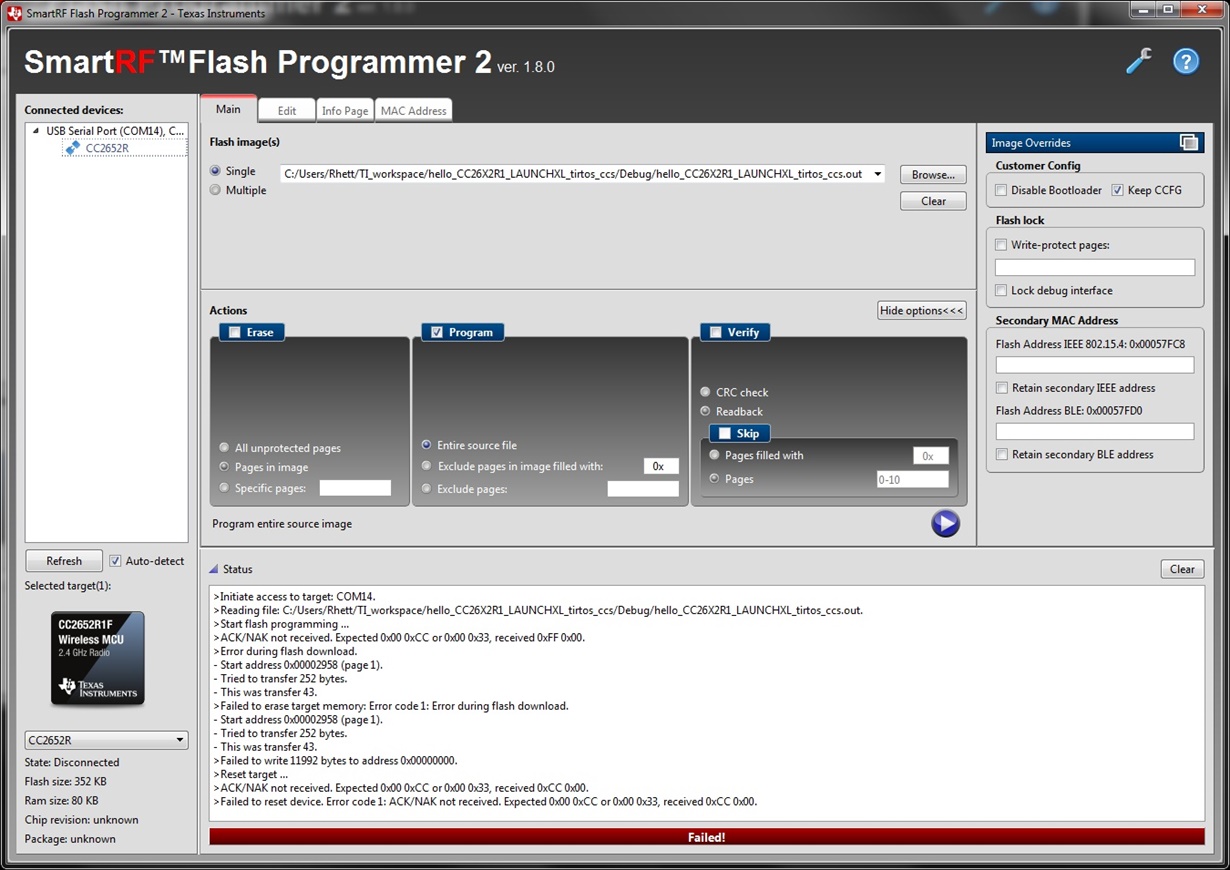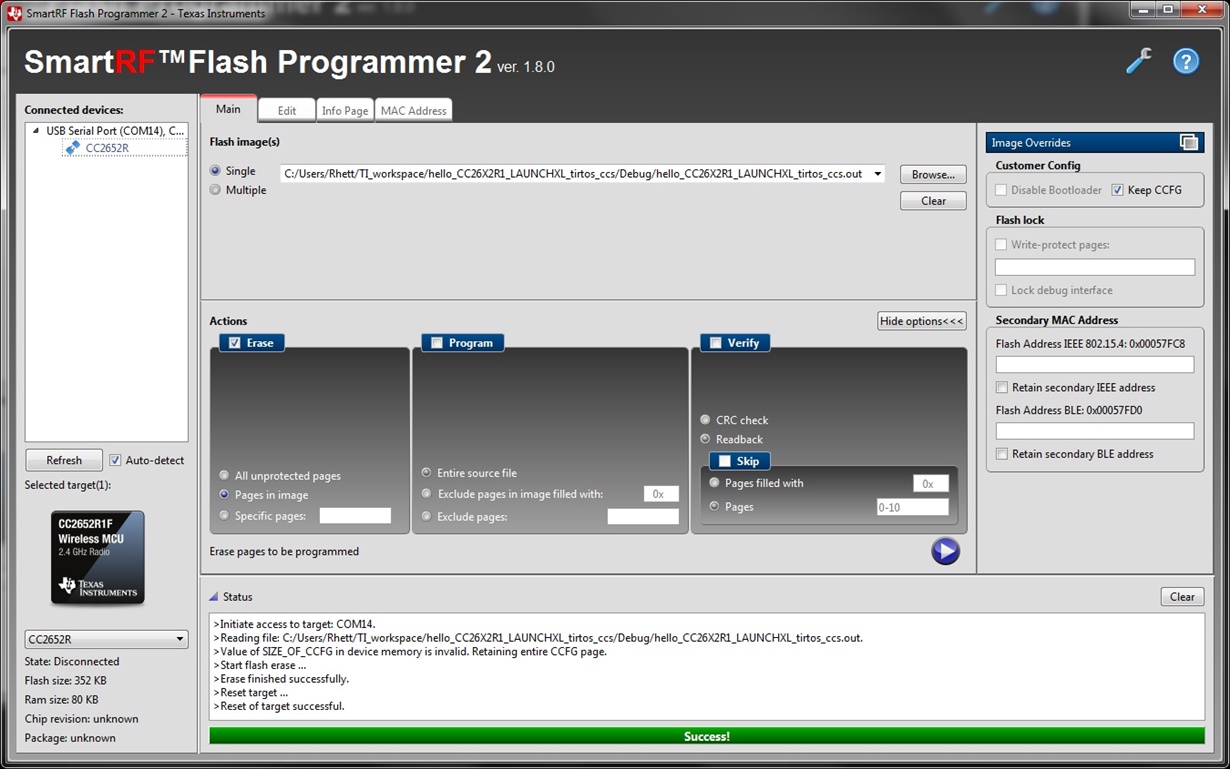Other Parts Discussed in Thread: UNIFLASH, SYSBIOS,
Having issues with programming our custom board based on the CC2652 via USB and the boot loader. UniFlash doesn't seem to support the USB interface. The latest version of SmartRF Flash Programmer 2 now supports the CC2652, and it works to query the board and read from it, but it fails when attempting to program the flash. I don't think it is the interface or my board because I can successfully read the entire Flash without errors.
Initially, I checked "erase", "program", and "verify" before hitting start, but it failed every time.
Doing the steps one at a time, I was able to erase flash sectors (but not bulk erase everything), and the verification would run, but of course the images didn't match.
After erasing, I attempted to program the entire program (at this point, just a LED blink test), but it failed. So I thought I'd try a partial program... I entered "0-10" in the "exclude sectors" -- and then it worked... Except it also locked the device (despite me NOT checking that option) and gave me a message about no further programming being possible. And since it was only partially programmed, it's now a brick.
Before I brick another board, does anyone know:
A) Why partial programming works, but complete programming fails?
B) Why SmartRF Flash locked my board after programming -- and how I can keep that from happening again?
C). I have a button tied to DIO4 -- how do I set the board configuration to allow that button to re-activate the boot loader?
Thanks in advance for any advice.
--Rhett





